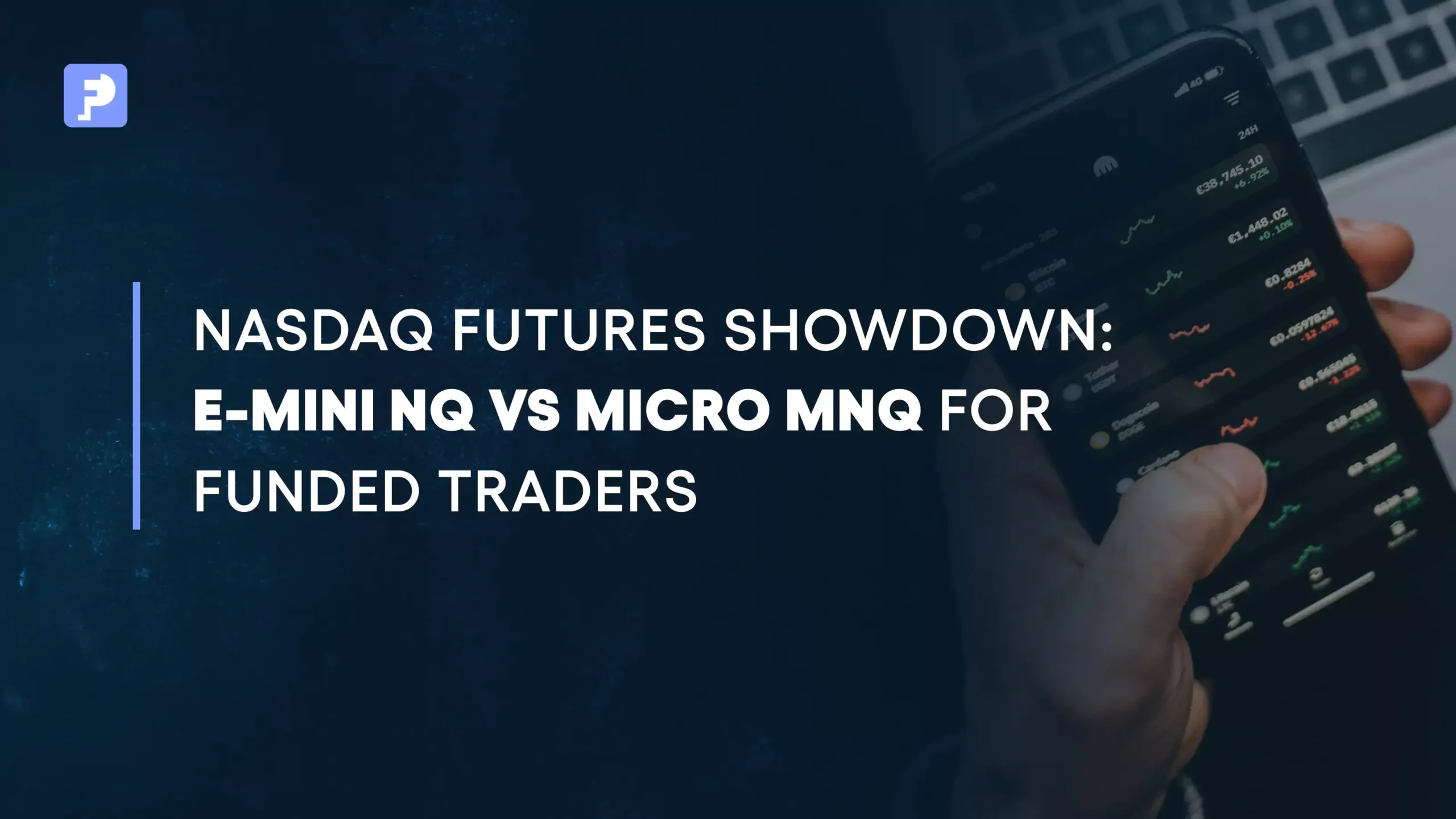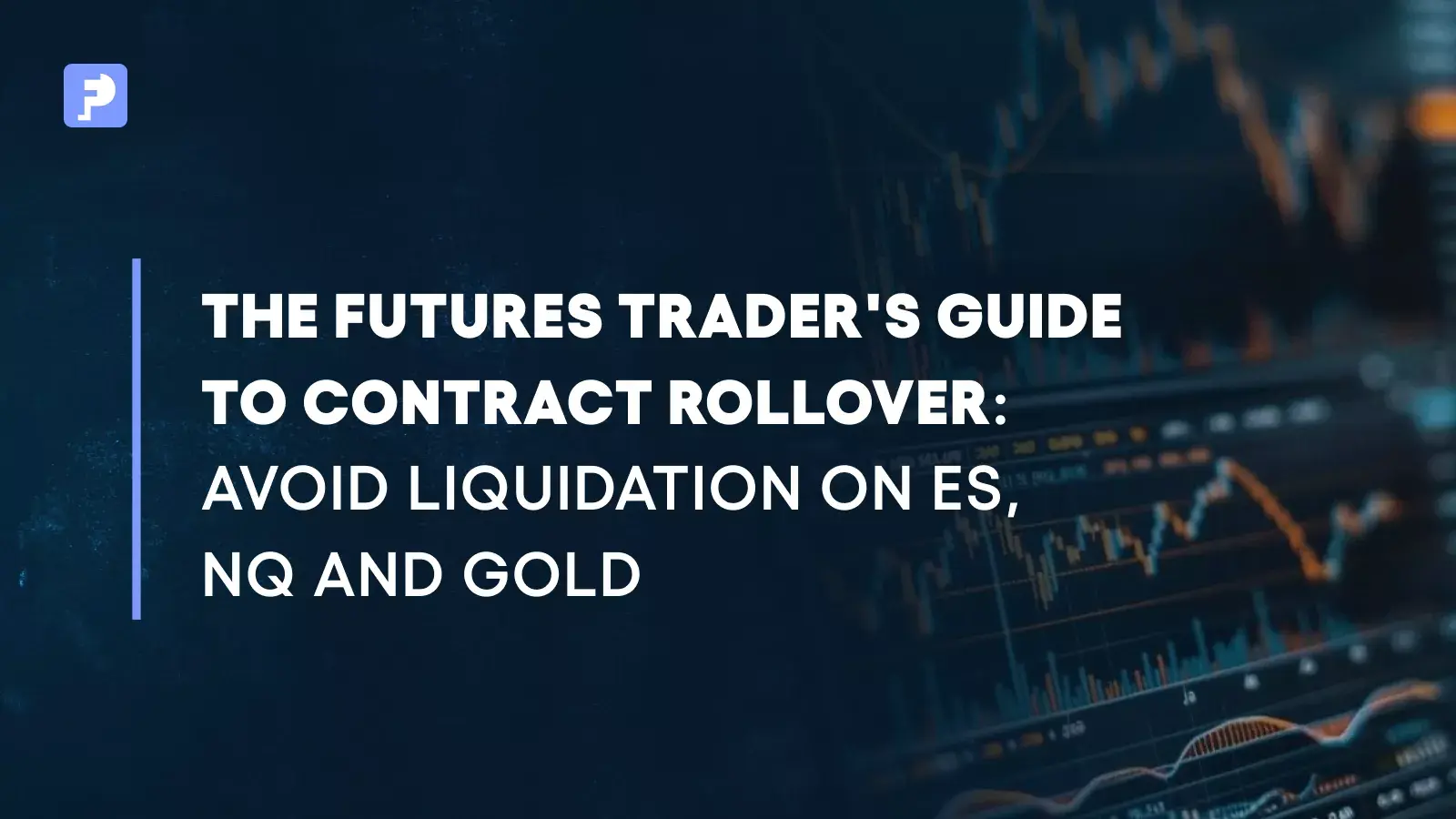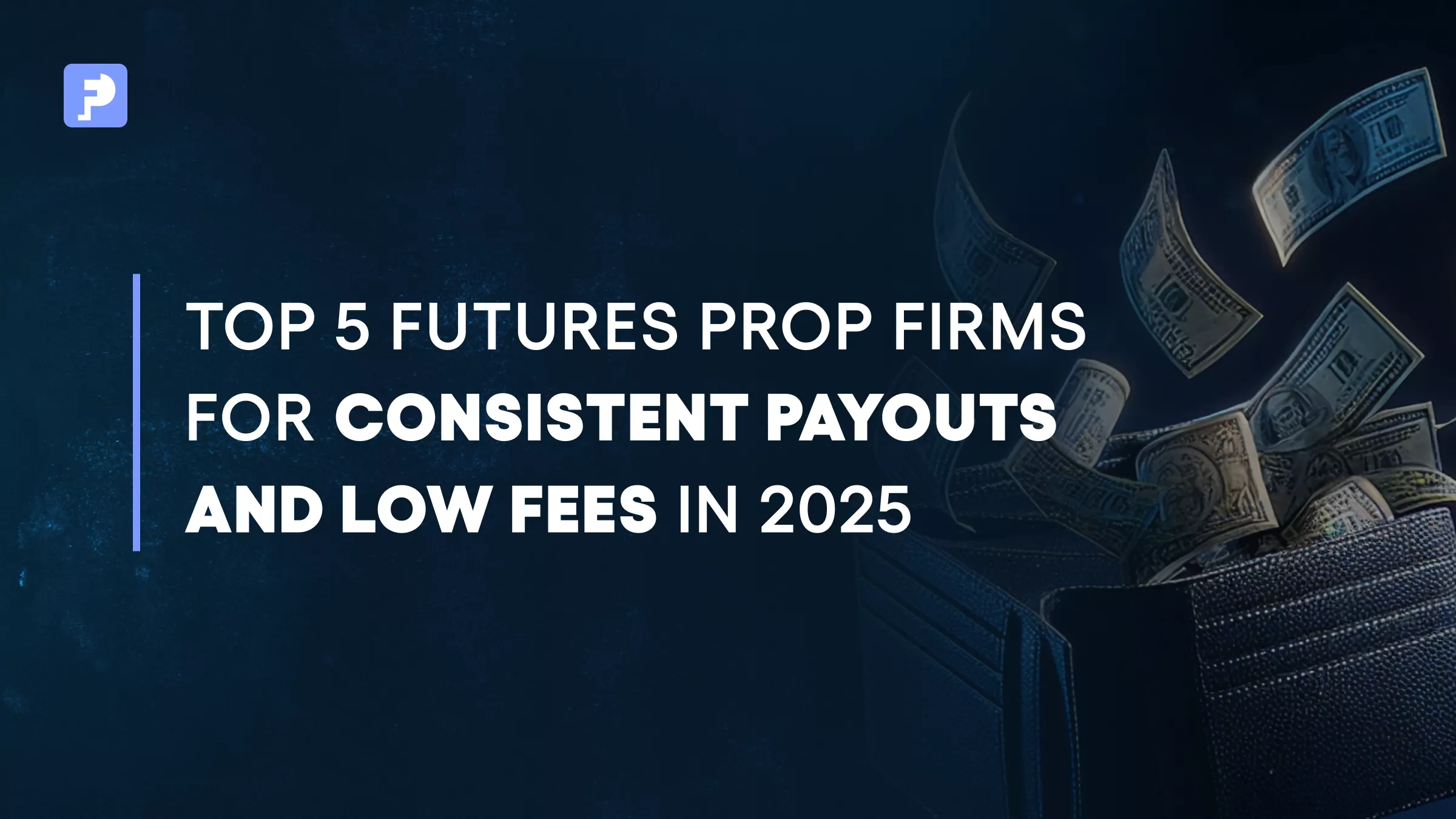
Nasdaq Futures Showdown: E-mini NQ vs Micro NQ for Funded Traders
Key Takeaway
- Both NQ (E-mini Nasdaq-100) and MNQ (Micro Nasdaq-100) track the index point for point.
- NQ offers efficiency, tighter spreads, and liquidity for traders running larger account sizes.
- MNQ, at one-tenth the size, gives funded traders precision in risk control, more flexibility in scaling, and more breathing room under prop firm drawdown limits.
Introduction
Funded traders often face a simple but critical decision: Should I trade the full E-mini Nasdaq (NQ) or use the Micro Nasdaq (MNQ) to control exposure? The Nasdaq-100 is one of the most volatile equity index futures. For traders in a funded account challenge, volatility can quickly become a double-edged sword — creating opportunity but also threatening strict trailing drawdown and profit target rules. In this breakdown, we compare NQ vs MNQ across contract specs, volatility, liquidity, and scaling paths. Each section uses verified CME Group data and ties back to how prop firm rules, like FunderPro’s 6% trailing drawdown, affect real traders. Related reading: Common Mistakes Traders Make in Funded Futures Accounts — understand why contract choice matters when every tick counts.Contract Specs That Matter
| Feature | NQ (E-mini Nasdaq-100) | MNQ (Micro Nasdaq-100) |
|---|---|---|
| Contract Multiplier | $20 × Nasdaq-100 index | $2 × Nasdaq-100 index |
| Tick Size / Tick Value | 0.25 index points = $5 | 0.25 index points = $0.50 |
| One Full Index Point | $20 | $2 |
| Notional Value (Index at 15,500) | $310,000 | $31,000 |
| Trading Hours (Globex) | Sun 5:00 p.m. CT – Fri 4:00 p.m. CT (with daily 4–5 p.m. break) | |
| Contract Months | Quarterly (Mar, Jun, Sep, Dec) | |
| CME Margin (Sept 2025) | ~$33,331 initial / $30,301 maintenance | ~$3,572 maintenance |
Volatility Profile and Risk Impact
Funded traders often face a simple but critical decision:Should I trade the full E-mini Nasdaq (NQ) or use the Micro Nasdaq (MNQ) to control exposure?
The Nasdaq-100 is one of the most volatile equity index futures. For traders in a funded account challenge, volatility can quickly become a double-edged sword — creating opportunity but also threatening strict trailing drawdown and profit target rules. In this breakdown, we compare NQ vs MNQ across contract specs, volatility, liquidity, and scaling paths. Each section uses verified CME Group data and ties back to how prop firm rules, like FunderPro’s 6% trailing drawdown, affect real traders. Related reading: Common Mistakes Traders Make in Funded Futures Accounts — understand why contract choice matters when every tick counts.Contract Specs That Matter
| Feature | NQ (E-mini Nasdaq-100) | MNQ (Micro Nasdaq-100) |
|---|---|---|
| Contract Multiplier | $20 × Nasdaq-100 index | $2 × Nasdaq-100 index |
| Tick Size / Tick Value | 0.25 index points = $5 | 0.25 index points = $0.50 |
| One Full Index Point | $20 | $2 |
| Notional Value (Index at 15,500) | $310,000 | $31,000 |
| Trading Hours (Globex) | Sun 5:00 p.m. CT – Fri 4:00 p.m. CT (with daily 4–5 p.m. break) | |
| Contract Months | Quarterly (Mar, Jun, Sep, Dec) | |
| CME Margin (Sept 2025) | ||
Volatility Profile and Risk Impact
The Nasdaq regularly moves 150–300 points intraday around CPI, earnings, and Fed events. Translating that into dollars:
- NQ → 200 points × $20 = $4,000 per contract.
- MNQ → 200 points × $2 = $400 per contract.
For a $100,000 funded account risking 0.5% ($500):
- On NQ, just a 25-point move equals $500 risk.
- On MNQ, that same $500 gives room for 250 points.
This buffer is often the difference between staying in a trade and hitting a stop prematurely.
See also: Mastering the Psychology of Prop Futures Traders — why volatility feels bigger than the math and how MNQ can reduce the emotional load.
Liquidity and Execution
- E-mini NQ trades hundreds of thousands of contracts daily with a typical 1-tick spread ($5).
- Micro NQ trades over one million contracts daily, with 1–2 tick spreads ($0.50–$1).
Execution quality is strong on both during U.S. market hours. For funded traders running 1–20 MNQs or 1–2 NQs, liquidity is more than sufficient. The choice comes down to flexibility: NQ offers capital efficiency, while MNQ gives more control over scaling.
Prop Trading Risk Rules in Practice
$100,000 Funded Account Example
- Risk per trade: 0.5% = $500
- NQ → 1 contract max, 25-point stop.
- MNQ → 10 contracts, with flexibility to scale.
Interaction with FunderPro’s 6% Trailing Drawdown
- Buffer = $6,000.
- One 300-point move against NQ = $6,000 → account breach.
- On MNQ, the same move = $600 per contract. Even with 10 contracts, a trader has flexibility to cut exposure before hitting the limit.
This makes MNQ the safer path for meeting profit targets while respecting rules.
Scaling Path for Funded Traders
- Begin with 3–5 MNQs to manage risk and learn Nasdaq’s volatility.
- Grow consistency → expand toward 10 MNQs.
- Transition to 1 NQ when comfortable with discipline.
- Use a hybrid mix (e.g., 1 NQ + 5 MNQs) for fine-tuned exposure.
- Scale fully into NQ once your strategy consistently protects trailing drawdown.
Related reading: How to Manage Leverage Effectively in Futures Trading — why scaling into size is more sustainable than jumping straight to NQ.
Trader Takeaways
- NQ: tight spreads, deep liquidity, efficient for size — but large swings can breach prop firm rules quickly.
- MNQ: mirrors NQ at one-tenth size, ideal for risk-controlled growth.
- Funded traders: MNQ allows staying in trades longer without violating drawdown limits.
- Scaling: starting with MNQ and transitioning to NQ is straightforward once consistency is proven.
Conclusion
Both NQ and MNQ contracts are available at FunderPro Futures. Start your FunderPro Futures Challenge today and trade Nasdaq with the contract size that matches your strategy.
Yes. With over one million contracts traded daily and spreads of 1–2 ticks, MNQ is liquid enough for typical funded account sizes.
They scale at about 10-to-1. As of September 2025, CME lists NQ margin at ~$33,331, while MNQ is ~$3,572. Margins are subject to change.
Yes. Both track the Nasdaq-100 index point for point. Only the monetary exposure differs.
Multiple MNQs allow scaling in and out, partial hedging, and granular risk control. One NQ is efficient, but less flexible.
Absolutely. Both contracts move identically. Many traders start with MNQ and graduate to NQ once consistent.
NQ accelerates gains but risks hitting drawdowns. MNQ provides a smoother path for consistency, making it the better starting point for most funded traders.
All trading in FunderPro Futures takes place in a demo-style environment and in off-exchange futures.



